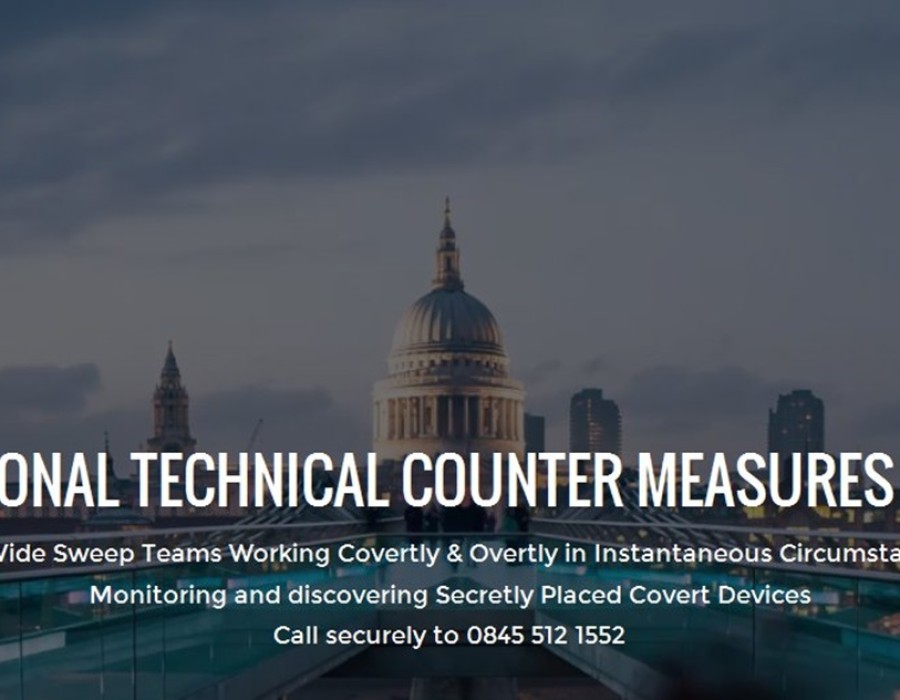In an era of ubiquitous technology and heightened surveillance, the concept of counter surveillance has become increasingly relevant. Whether you're a private individual concerned about privacy, a business protecting trade secrets, or a security professional, understanding and implementing counter surveillance techniques can be crucial. This article delves into the fundamentals of counter surveillance, its importance, and the strategies you can use to safeguard your privacy and security.
Understanding Counter Surveillance
Counter surveillance involves measures and techniques employed to detect and prevent surveillance. It is the art of evading, detecting, and counteracting surveillance efforts, whether from individuals, organizations, or government entities. The aim is to protect sensitive information and ensure personal or corporate privacy.
Types of Surveillance
To effectively counter surveillance, it’s important to understand the various types of surveillance that one might encounter:
- Physical Surveillance: Involves the direct observation of a person or property by an individual or team.
- Technical Surveillance: Utilizes electronic devices such as cameras, microphones, GPS trackers, and other forms of technology to monitor and gather information.
- Cyber Surveillance: Involves monitoring online activities, such as browsing habits, social media interactions, and communications.
Importance of Counter Surveillance
The importance of counter surveillance cannot be overstated in a world where personal and corporate espionage is increasingly common. Here are some key reasons why counter surveillance is essential:
Privacy Protection
With the rise of digital technology, privacy has become a significant concern. Counter surveillance helps individuals protect their personal information from being monitored or stolen.
Corporate Security
Businesses often possess sensitive information, including trade secrets, financial data, and strategic plans. Effective counter surveillance can prevent corporate espionage and protect competitive advantages.
Personal Safety
In some cases, individuals may be targeted for surveillance due to personal relationships or threats. Counter surveillance can enhance personal safety by identifying and mitigating these risks.
Techniques and Strategies for Counter Surveillance
Implementing counter surveillance involves a combination of awareness, technology, and tactics. Here are some effective techniques and strategies:
Physical Counter Surveillance
- Surveillance Detection Routes (SDRs): Use predetermined routes and patterns to detect if you are being followed. Varying your routes and times can help identify potential surveillance.
- Situational Awareness: Always be aware of your surroundings. Notice if the same individuals or vehicles appear frequently in your vicinity.
- Utilize Reflective Surfaces: Use mirrors, windows, and other reflective surfaces to discreetly observe if someone is watching you.
- Engage in Normal Activities: Blend in with your environment by engaging in normal, everyday activities. This makes it harder for potential surveillants to identify you as a target.
Technical Counter Surveillance
- Bug Sweeps: Regularly conduct electronic sweeps to detect hidden cameras, microphones, and other listening devices. Professional bug sweeping services can provide thorough inspections.
- RF Signal Detectors: Use radio frequency (RF) detectors to identify hidden wireless devices that may be transmitting your information.
- GPS Tracker Detection: Periodically check your vehicles for hidden GPS tracking devices.
- Secure Communications: Use encrypted communication methods for phone calls, emails, and messages. Applications like Signal and ProtonMail offer end-to-end encryption.
Cyber Counter Surveillance
- Use VPNs: Virtual Private Networks (VPNs) mask your IP address and encrypt your internet connection, making it difficult for cyber surveillance to track your online activities.
- Secure Browsing: Use privacy-focused browsers like Tor and enable features that block tracking cookies and scripts.
- Regular Software Updates: Keep all your software, especially antivirus and anti-malware programs, up to date to protect against vulnerabilities.
- Strong Passwords and 2FA: Implement strong, unique passwords for all accounts and enable two-factor authentication (2FA) to add an extra layer of security.
Behavioral Techniques
- Disinformation: Occasionally spread false information to confuse and mislead potential surveillants.
- Change Routines: Frequently change your daily routines and habits to make it difficult for surveillants to predict your actions.
- Minimize Digital Footprint: Limit the amount of personal information you share online and on social media platforms.
Counter Surveillance Tools and Technology
There are numerous tools and technologies available to aid in counter surveillance efforts. Here are a few notable ones:
Electronic Sweeping Devices
These devices can detect and locate hidden cameras, microphones, and other surveillance equipment. They are essential for conducting regular sweeps of personal and professional spaces.
Signal Jammers
Signal jammers can block unwanted signals from surveillance devices, including GPS trackers and listening devices. However, their use may be regulated or illegal in some jurisdictions.
Encrypted Communication Apps
Apps like Signal, WhatsApp (with end-to-end encryption), and ProtonMail ensure that your communications remain private and secure.
Anti-Tracking Software
Software like Anti-Beacon and Ghostery can block tracking scripts and cookies on your devices, enhancing your online privacy.
Legal and Ethical Considerations
While counter surveillance is crucial for protecting privacy and security, it’s important to consider the legal and ethical implications:
Legal Restrictions
Different countries and states have varying laws regarding the use of surveillance and counter surveillance devices. Always ensure that your counter surveillance activities comply with local laws to avoid legal repercussions.
Ethical Boundaries
Ethical considerations should also guide your counter surveillance efforts. Avoid infringing on others’ privacy rights and use counter surveillance techniques responsibly and ethically.
Conclusion
Counter surveillance is an essential practice in today’s world, where the boundaries between personal privacy and surveillance are constantly being tested. By understanding and implementing effective counter surveillance techniques, individuals and businesses can protect their sensitive information, ensure their privacy, and enhance their overall security. Whether through physical awareness, technical measures, or cyber defenses, mastering counter surveillance is a vital skill for navigating the complexities of modern surveillance landscapes.





Comments